Archive Section
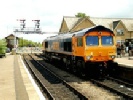



Saturday 20th May 2023
© Photos & Text Tom Chaffin
The 2023 AGM was held on Saturday 20th May 2023 in a former LMS railway carriage at Rowsley South on the Peak Rail line. The AGM had been booked for the previous weekend, but was postponed to 20th May due to RMT strikes. The weather on the previous weekend was wet and miserable, but as can be seen below, the weather was glorious on this Saturday, so a fortunate postponement!
Click images for an enlargement
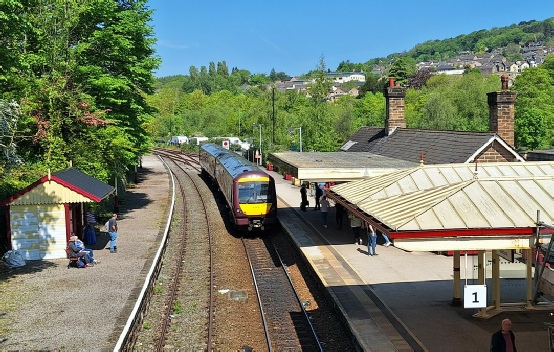
Travel from Derby to Matlock was on Class 170 170 533. The Class 170s had recently replaced the Class 153s and 156s on the Matlock branch and they represent a significant improvement in passenger comfort with air-
East Midlands Railway (EMR) now operates the largest fleet of Class 170s on National Rail with units transferred from ScotRail, Southern and as per the example, West Midlands Railway where they have been displaced by new-
Whilst in EMR colours on the outside, the inside was still in former operator’s, London Midland, condition
Being a sunny Saturday morning, the train was well filled, particularly with passengers visiting the attractions at Matlock Bath
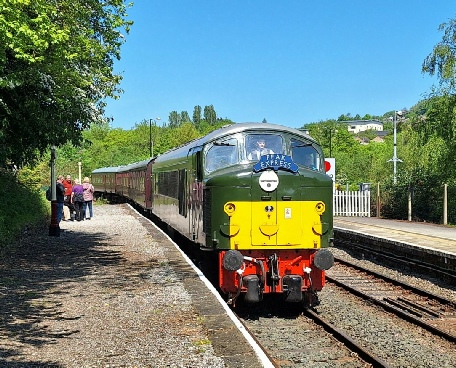
The Peak Rail platforms are on the adjoining platform at Matlock to National Rail, so an easy transfer, though the signs showing the route between the two platforms could be improved.
We had not been waiting for long before ‘Peak’ D8 Penyghent arrived with the 2M01 11.00 from Rowsley South.
As Peak Rail trains run on Network Rail infrastructure into Matlock station, they have four-
There are no run-
D8 is seen undertaking the run-
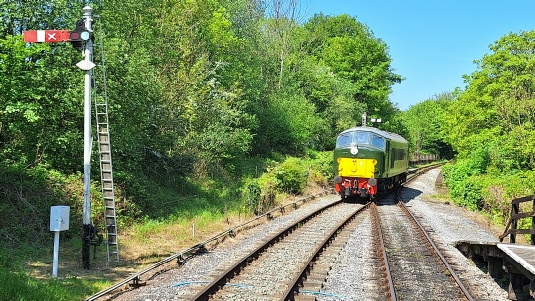
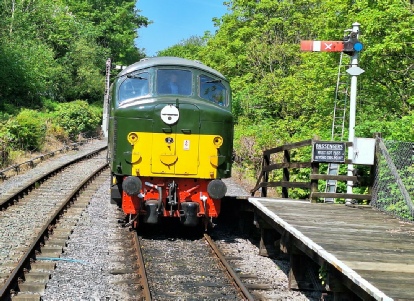
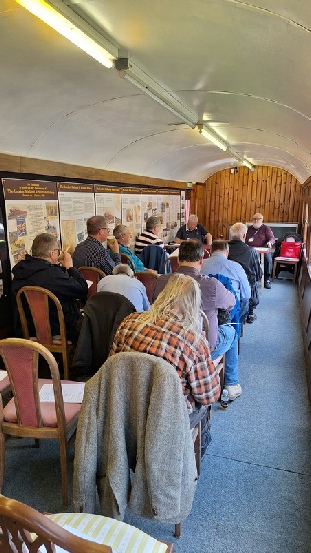
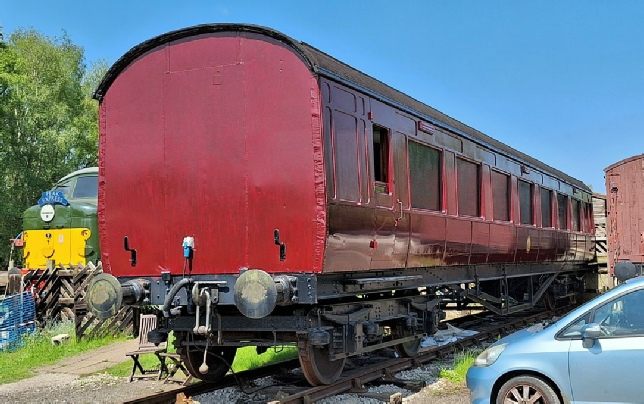
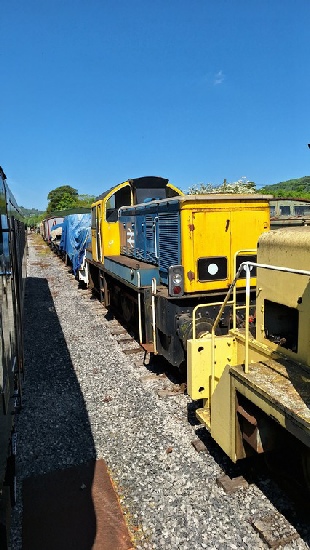
On the approach to Darley Dale we passed various items of Peak Rail stock including Class D9500 Diesel Hydraulic D9524, painted as it may have looked as a Britidsh Rail Class 14, if it had remanded in stock into the mid-
In reality, the class had a very short life span on British Railways, being introduced in 1964 and with the first examples withdrawn in 1968, mainly because the traffic they had been built for had disappeared. Many of the class were sold to private industry such as for use in collieries, oil refineries and steelworks, which resulted in many of the locomotives spending much longer in private ownership than on BR. Many of the class are now persevered.
D9524 was used by BP at Grangemouth between 1970 and 1981 before being preserved initially by the Scottish Railway Preservation Society at Falkirk.
It has been re-
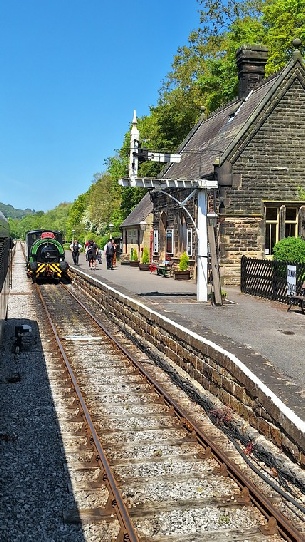
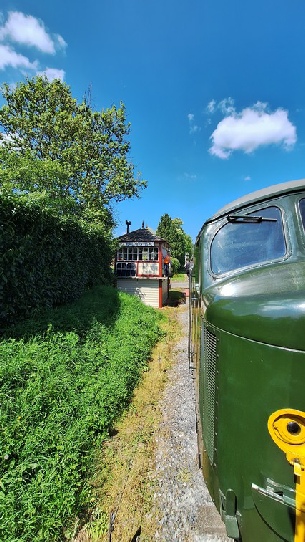
At Darley Dale we passed steam locomotive No.15 ‘Eustace Forth’.
Eustace Forth was built in 1942 at the Forth Bank Works in Newcastle for working at Dunston Power Station in Gateshead
Token exchange at Church Lane Crossing.
The AGM was held in a former LMS coach at Rowsley South
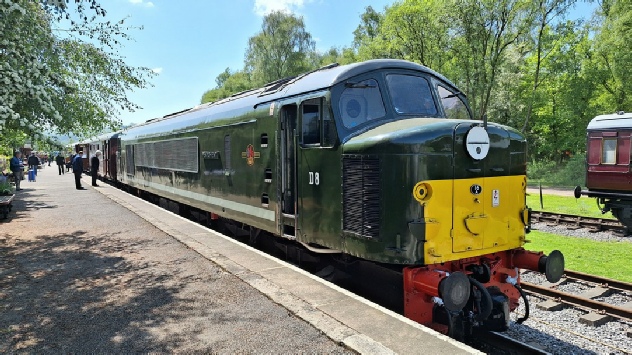
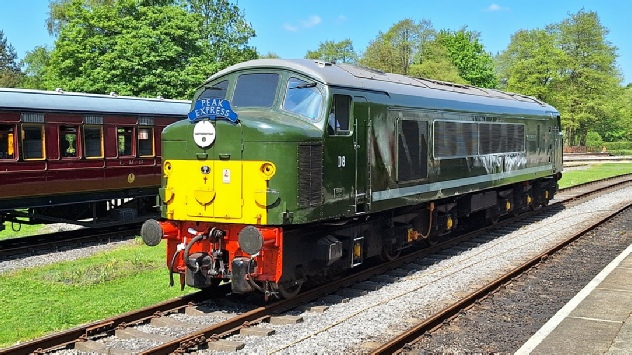
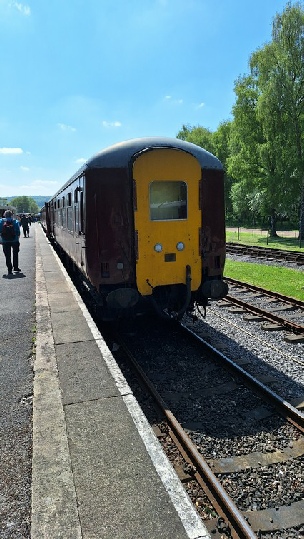
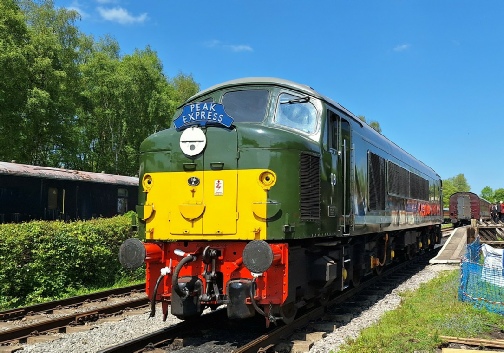
D8 upon arrival at Rowsley South.
D8 was built in 1960 and was one of only ten Class 44s, then numbered D1 to D10, built between 1959 and 1960.
D1 to D10, were all named after British mountains, hence the name “Peaks” used both for the Class 44s and subsequent similar Class 45s and 46s, though the later classes were generally either not named, or had names of British Army regiments
D8 run rounds it’s train at Rowsley South.
D8 was withdrawn by British Rail in November 1980 and was originally purchased for preservation in Scotland in June 1981
During the propelling move from Matlock to Matlock Riverside, a lookout is maintained from the leading vehicle a Mk2 BSO, which is fitted with a viewing window in the gangway connection for the purpose.
D8 backs onto the 13.00 to Matlock.
D8 was purchased by the North Notts Locomotive Group in 1986, who restored it to full working order.
As can be seen in the photos, it appears to be n almost as-
The AGM gets underway with Alan Spencer, Chairman and Malcolm Pym, Events/Fixtures Secretary on the right and left respectively of the ‘top’ table
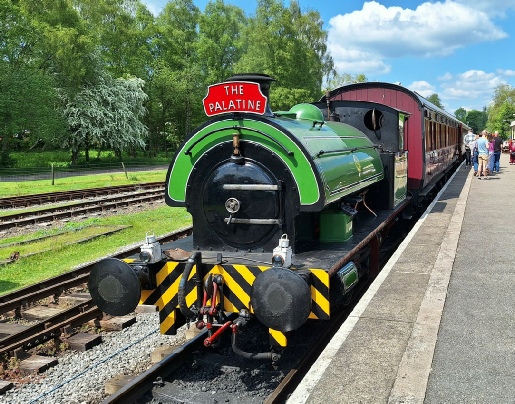
Just after the AGM concluded and whilst we were enjoying a generous buffet lunch there was a chance to watch Eustace Forth depart Rowsley South on the popular “The Palatine” afternoon tea train
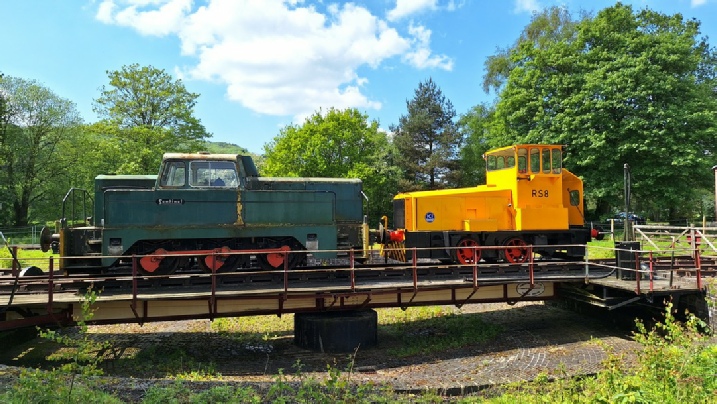
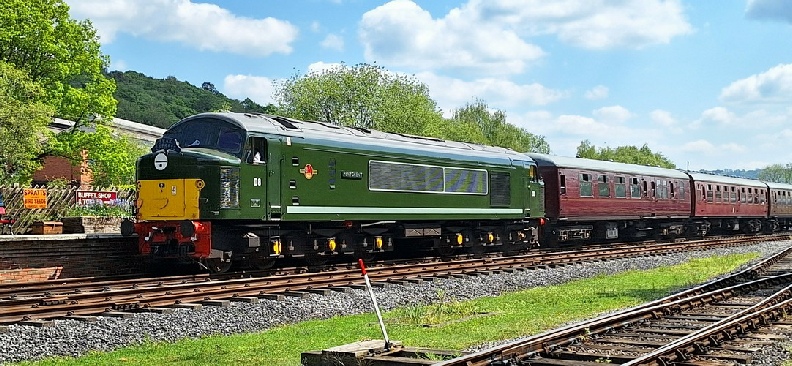
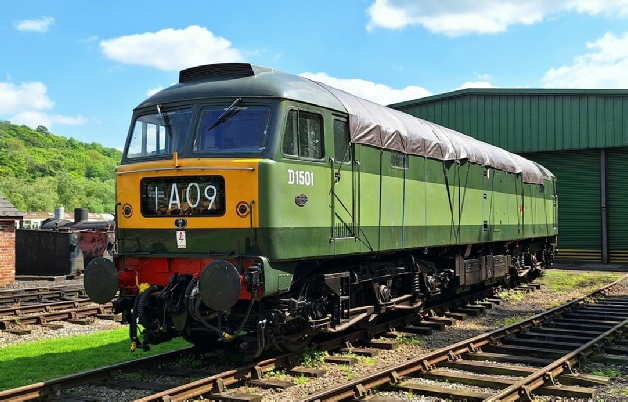
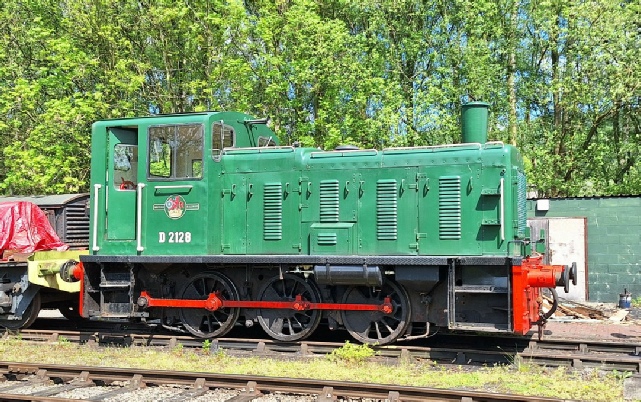
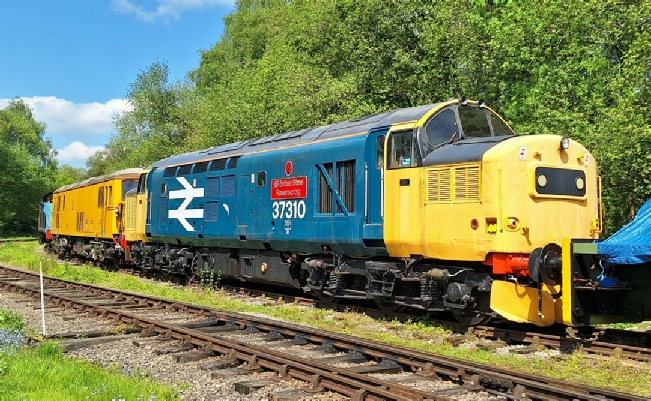
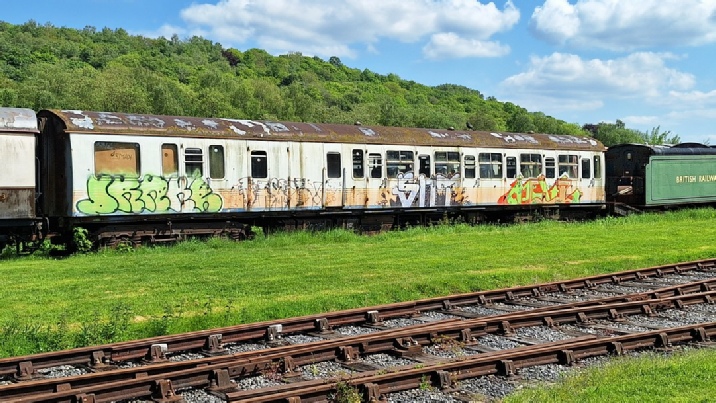
Still in a similar condition to when it was in service with Connex South Central, Class 423 4VEP MSO 62266 from unit 7805, later 4VOP 3905.
This coach was used as a source of spare parts for the 5BEL / Brighton Belle Project
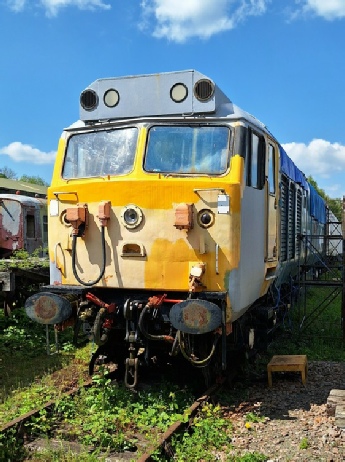
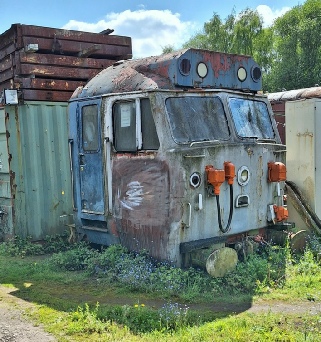
Maybe not quite looking so illustrious now, one of the cabs from 50 037 Illustrious
50 030 Repulse, under restoration, with 50 029 Renown, by the Renown Repulse Restoration Group
Brush Type 4 / Class 47 D1501, which at one stage was 47 402.
Built in 1962, D1501 was second built of the 512 strong class.
D1500 -
These were also the only Class 47 originally equipped with both electrical and steam heating equipment, with the electrical train heating (ETH) supply tapped from the main DC generator. Other Class 47 later equipped with ETH were fitted with an alternator. D1500 -
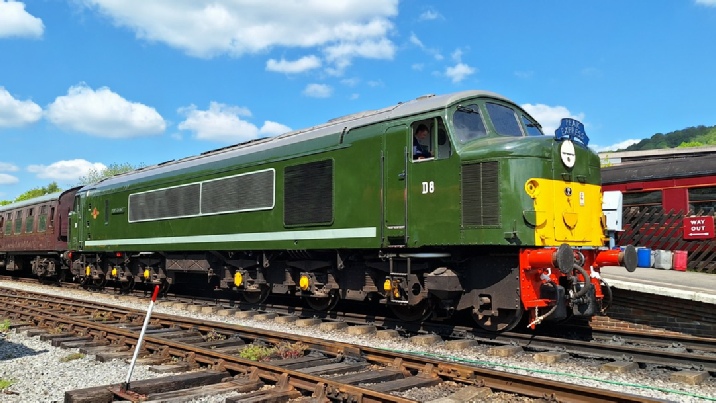
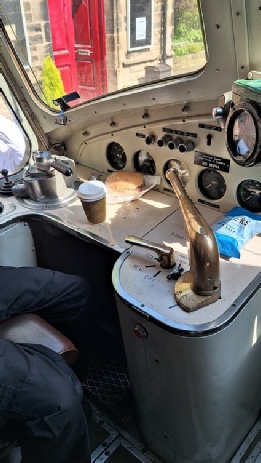
Members were kindly offered by Peak Rail the opportunity to travel in the cab of D8 in ‘relays’ between stations on the return journey back to Matlock.
The immaculately restored controls of D8, along with the driver’s lunch!
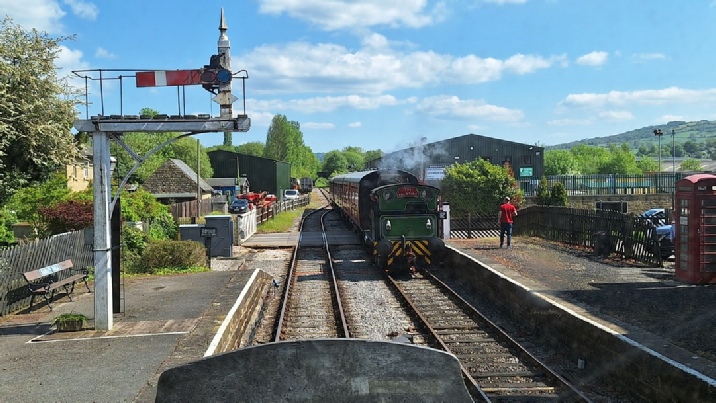
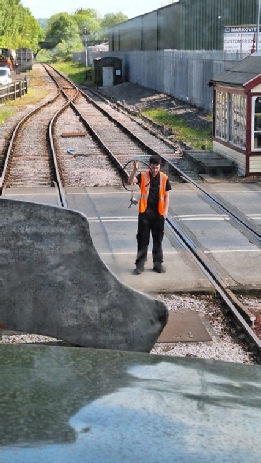
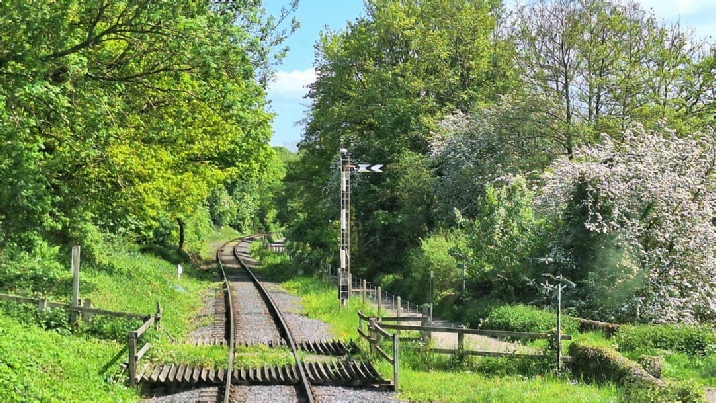
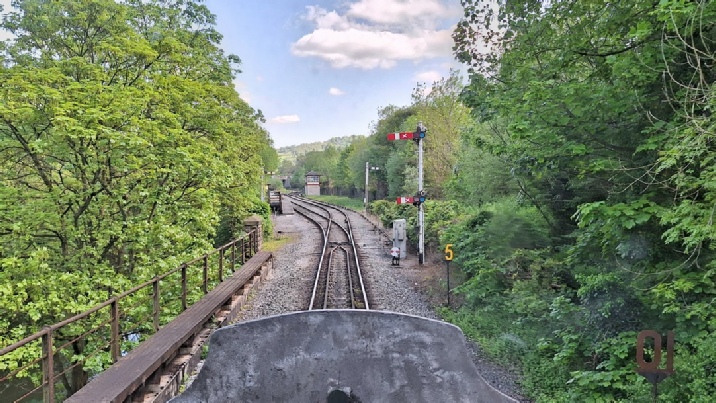
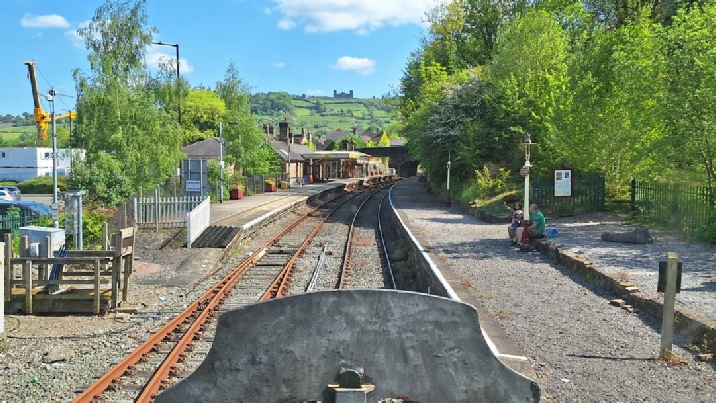
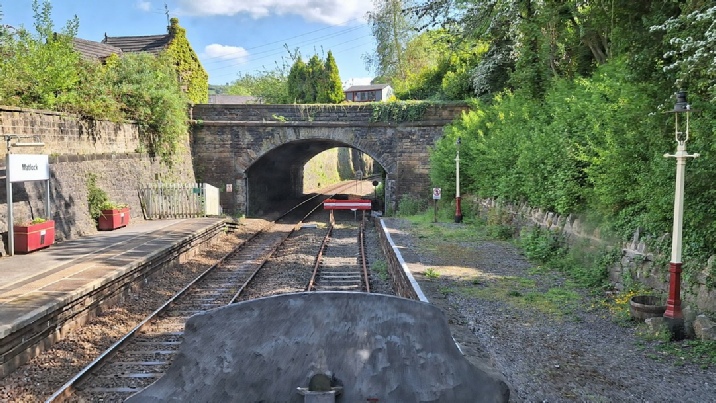
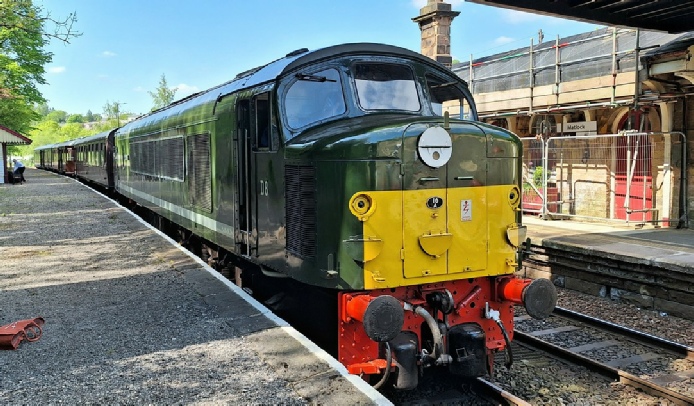
Before returning to Matlock, there was time to look around the yard at Rowsley South
On the left is Sentinel engine with works number 10180 and was built in 1964 for use at the National Coal Board Cadeby Main Colliery near Conisborough. After Cadeby Collery closed it was moved to Maltby Colliery before entering preservation in 1987.
D2128, a Class 03, was built in Swindon in the late 1950s and allocated to Laira, Plymouth. It was later renumber 03 128.
Sold for scrap in the mid 1970s it was further sold by the scrap dealer for use in Zeebrugge, Belgium, where it was re-
Repatriated to the UK in 1991, it passed through various owners before used in the Scunthorpe Steelworks Railway in 2008 were it was re-
Normally based at Midsomer Norton on the Somerset & Dorset Railway, it is currently at Peal Rail for repair.
D8 upon arrival back at Rowsley South with the 13.40 from Matlock
As D6852, this locomotive was built by English Electric at their Vulcan Foundry in 1963 and was allocated to Landore shed.
Later transferred to Scotland in 1966, first at Polmadie shed and then Eastfields Depot. It was renumber ed 37 152 in April 1974 and further renumbered 37 310 after a heavy general overall in 1986, when it was also named British Steel Ravenscraig at Motherwell.
Withdrawn by EWS in 1999, it was purchased for preservation in 2005, initially at Carnforth before being moved to Peak Rail in March 2006
D8 at the front of the train ready to work the 15.00 from Rowsley South
Eustace Forth passes at Darley Dale.
Collecting the token for the single track between Darley Dale and Matlock Riverside.
Our locomotive was worked by a Granddad as the driver and his Grandson as the second man, who collected the token from the locomotive door.
Being at the ‘front end’ provided a great view of of the scenic Peak Rail infrastructure.
The locomotive was deliberately lightly worked with only power notches 1 and 2 mainly being used due to a combination of significant locomotive power, relativity light load, maximum 25mph speed limit of the line as well as the desire to save fuel and to reduce the ware and tare on the locomotive. There was no difficulty keeping time.
Approaching Matlock Riverside.
Full signalling is in the process of being restored, with the signal box top section, which houses a 30 leaver frame, being formally at Luffenham Junction.
In the meantime, the white cross on the signal means it is out of use, and so can be passed when ‘on’.
All too soon we were arriving in Platform 2 of Matlock again.
The cross-
The 19th Century Riber Castle, built by John Smedley, Victorian mill owner and philanthropist can be seen on the hill in the distance.
Arrival at Matlock. The track on the left is Network Rail Derwent Valley line towards Ambergate Junction and ultimately Derby.
D8 upon arrival at Matlock. It will later work the 15.40 to Darley Dale, initially remaining on this end of the train to propel the train to Matlock Riverside.
The Locomotive and Carriage Institution would like to say a big thank you to Peak Rail for a very smooth AGM and enjoyable day out.
It you haven’t yet visited Peak Rail -
Finally, there was an opportunity for a quick drink in the nearby The Pointing Dogs pub, serving tasty Derby Brewing ales, before returning back to Derby and beyond